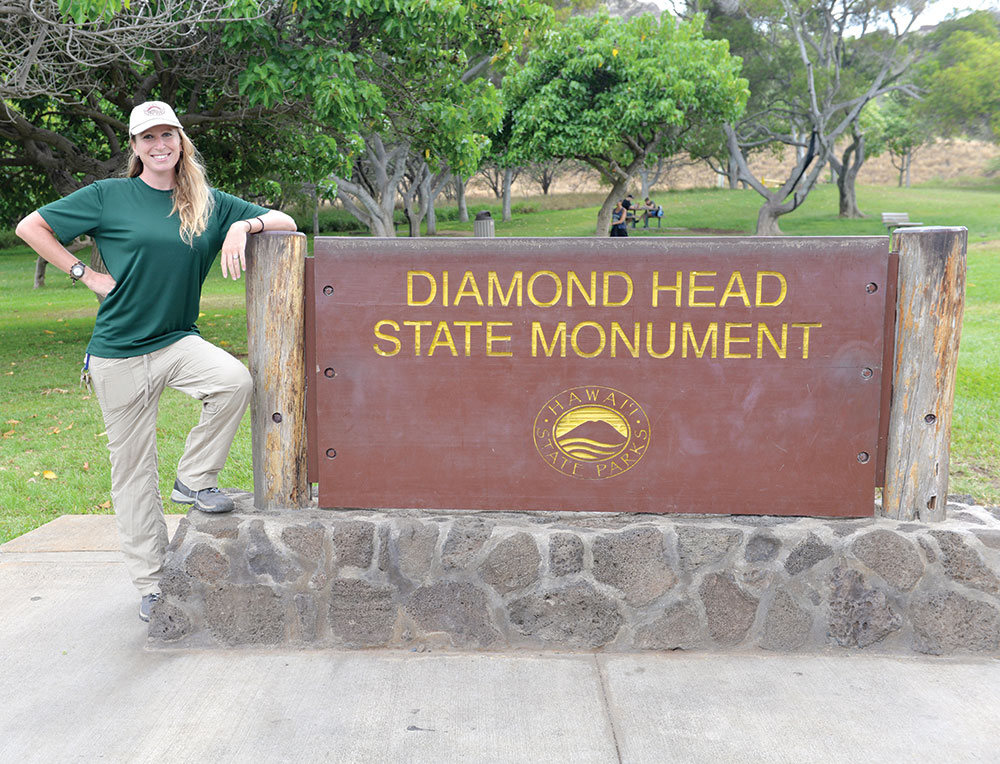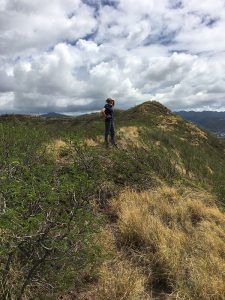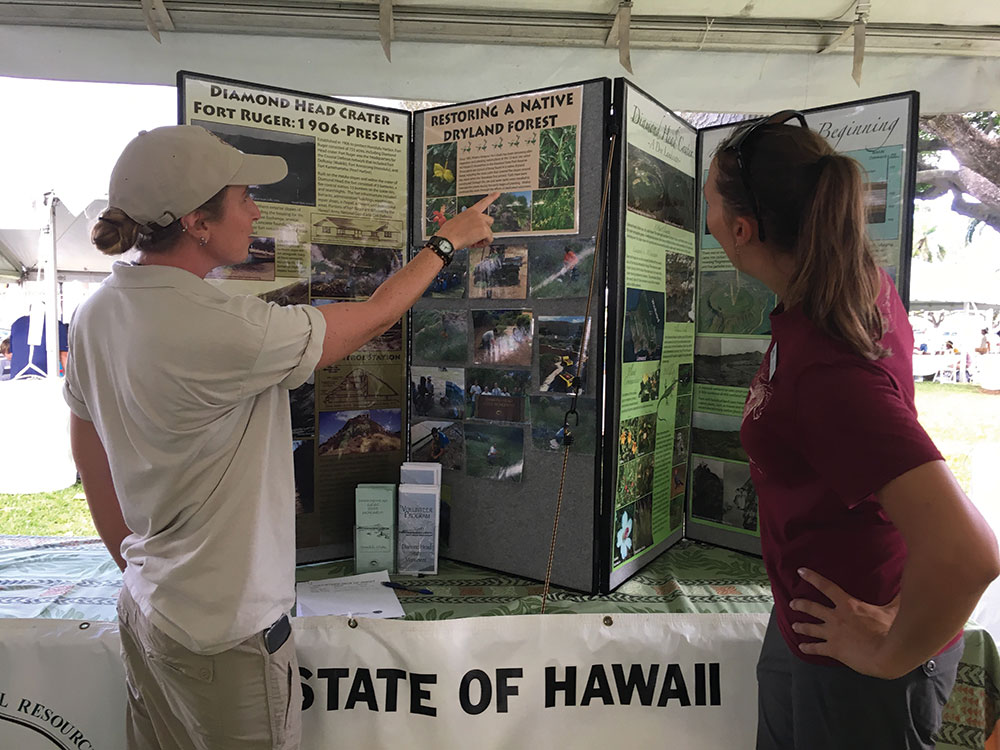First Impressions from Diamond Head’s Newest Park Ranger
July 31, 2017

When I moved to Hawaii in 2016, Diamond Head State Monument was one of the first places I hiked. Like most visitors, I was drawn to her majesty. She is an enigmatic figure that casts her long, magnificent shadow over Waikiki. Leahi acts as an unspoken representation of the Hawaiian culture, military history and geological stages on Oahu. Always present. The more locals I talk to, the more I realize that people who live here have forgotten Leahi exists. To them, she has become another part of the picturesque backdrop we take for granted daily. This is extremely sad to hear, because, from what I can tell, most people who visit Diamond Head leave with a sense of peace, gratitude and unity.
 For those of you who remember your last Diamond Head hike, the trail up to the summit is essentially a time machine. There is evidence everywhere of the 300,000-year-old explosive eruption that formed the tuff cone of Leahi as you hike your way through geological phases. Due to erosion and heavy foot traffic in the park, the trail does have some wear and tear that adds to the authenticity of the experience. Built in 1908 as part of Oahu’s coastal defense system, the hiking trail snakes along the crater edge and ultimately rewards visitors with stunning views of Waikiki, downtown Honolulu and surrounding valleys. It never fails to take my breath away — literally, it’s 761 feet above sea level.
For those of you who remember your last Diamond Head hike, the trail up to the summit is essentially a time machine. There is evidence everywhere of the 300,000-year-old explosive eruption that formed the tuff cone of Leahi as you hike your way through geological phases. Due to erosion and heavy foot traffic in the park, the trail does have some wear and tear that adds to the authenticity of the experience. Built in 1908 as part of Oahu’s coastal defense system, the hiking trail snakes along the crater edge and ultimately rewards visitors with stunning views of Waikiki, downtown Honolulu and surrounding valleys. It never fails to take my breath away — literally, it’s 761 feet above sea level.
Now, how did I get lucky enough to call Diamond Head crater my new office?
I started my biology career as an undergraduate in Connecticut by spending my spare time interning for a marine-based research laboratory. My bachelor’s degree, however, was in psychology, so you can imagine my parents’ surprise when I went back to school for my master’s in biology, specifically ecology. In 2014, I was suddenly promoted to director of Cedar Island Marina Research Laboratory by day and continued my graduate studies at night. A few months into my graduate program, I was offered a part-time job as a teacher’s assistant, and I quickly added that to my resume as well. I taught botany and zoology labs while continuing my research and striving toward graduating with a 4.0 GPA on time. In 2015, I finished my master’s after only one and a half years in the program. Then I moved to Florida and, within the next year, was offered a position as a park ranger at Women’s Rights National Historical Park in Seneca Falls, N.Y. Today, I am the interpretive technician, or park ranger, at Diamond Head State Monument.

As an interpretive park ranger, my purpose is to help visitors understand why Leahi is so unique. I strive to establish a personal connection between each visitor and this beautiful crater so they may learn to appreciate and ultimately preserve it for future generations. I am just a single piece of an extremely complex machine. I work with interns, maintenance and managers to help the park run smoothly on a daily basis; however, we do need help. If you are looking for a way to give back and get involved in the long-term preservation of this iconic landmark, then join us at Diamond Head for an afternoon of protecting one of Oahu’s most important cultural and natural resources.
You can find more information on how to volunteer through the Hawaii State Parks volunteer website at dlnr.ivolunteer.com.